There is a stupid coin trading method that allows you to maintain "eternal profit" and get 30 million!
At the beginning of 2017, I unexpectedly met cryptocurrency
In the bull market from 2017 to 2018, I invested 60,000 and finally earned more than 1 million.
The bull market from 2020 to 2021 relied on about 10 million, with a maximum floating profit of more than 20 million.
I'm still making money through coins. Once I understand the coin, it's like I have an advantage.
At the end of last year, I played with 200,000 and now I have 20 million, easily making a hundred times profit (suitable for everyone)
A new round of bull market for cryptocurrencies is ready to go, and the goal of this round is to achieve true financial freedom.
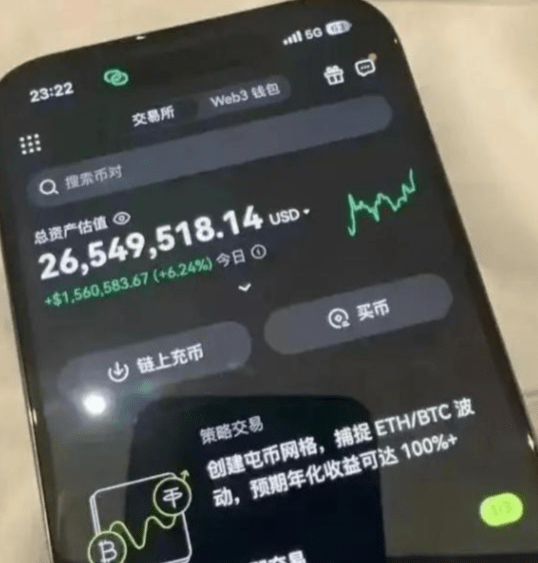
My coin trading method is very simple and practical. I only use it for one year to trade up to 8 figures. I only enter the market when I see the right opportunity. I don't place orders without a pattern. I have maintained a winning rate of over 90% for five years!
More time is spent fishing and exercising.
If you also want to use coin trading as a second source of income, want to get a share of the pie in the coin circle, and are willing to spend time growing and learning, then don't miss this article, read it carefully, every one is the essence of the coin circle.
More than 10 years of professional coin trading, from entering the coin circle with 8,000 to losing 8 million, and now to financial freedom and class leap. I have summarized the following iron rules for coin trading to help you navigate the coin circle with ease! Share with those who are destined
1. Divide your funds into 5 parts, and only invest one-fifth each time, controlling the stop loss at 10 points. A single mistake will only lose 2% of your total funds, and 5 mistakes will only lose 10% of your total funds.
2. Follow the trend. Each rebound in a downtrend is a lure to go long, and each drop in an uptrend creates a golden opportunity to buy.
3. Don't touch any coins that have risen sharply in the short term; a stalled rise at a high level will naturally lead to a decline.
4. Use MACD to determine entry and exit points. A stable entry signal is when the DIF line and DEA form a golden cross below the 0 axis and break through the 0 axis. A signal to reduce positions is when the MACD forms a death cross above the 0 axis and runs downward.
5. Never add to a losing position, but add to a winning position. Volume and price indicators are also important. Pay attention to volume breakouts at low levels during price consolidation, and exit decisively when volume stalls at high levels. Only trade currencies in an upward trend. The 3-day, 30-day, 84-day, and 120-day moving averages turning upward represent short-term, medium-term, main upward wave, and long-term gains, respectively.
6. Insist on reviewing the market every week and adjusting trading strategies in time. These iron rules are all experiences I have personally explored and practiced. Learn more and apply them.
Teach you three steps to backtest strategies: The essential "weapon" to create high-win-rate trading strategies and defeat other traders
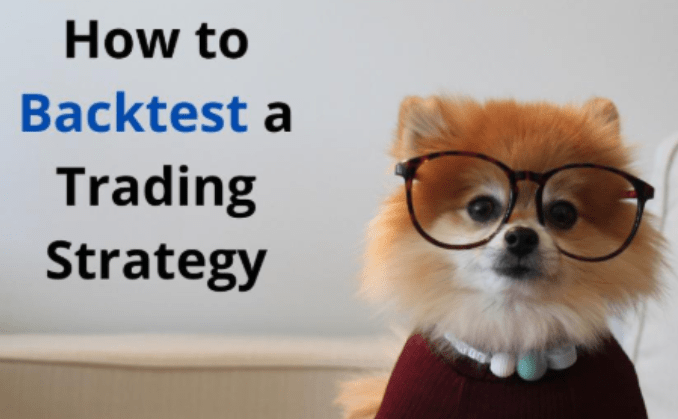
Generally speaking, trading without proper backtesting is like playing in a casino. You may win a few times, but in the long run, you will suffer significant losses. The reason is that before you start taking risks, the most important thing is to fine-tune your trading strategy. It needs to provide relatively stable performance in various market conditions. This article will help you understand how to backtest trading strategies, which backtesting methods are most effective, how to evaluate test results, and most importantly - when you are ready to enter the market for trading.
What is backtesting?
Backtesting is a method of analyzing the performance of a current trading strategy over a period of time in the past. Backtesting trading strategies can help you assess their behavior in hindsight market scenarios and identify their strengths and weaknesses. It is an important tool to help you validate your trading model in hindsight.
Backtesting is designed to help generate results and assess risks and profitability without risking any actual money. Imagine swimming in a life jacket - you can taste the water, but you won't drown.
Backtesting is like training for professional athletes. They spend hours perfecting their technique before going out to compete with others. This way, they become better, building confidence based on a wealth of testing, data, and analysis.
Basics
We can use many different software programs for backtesting. Options include Microsoft Excel, off-the-shelf third-party platforms, or building from scratch. Leading algorithmic trading firms use different computer languages to write backtesting software. These languages include C++, C#, Python, or R (for less complex projects), and even today's popular AI technology can be used for backtesting.
In addition, you can also use TradingView for trading backtesting, which is a highly professional and powerful charting tool that provides convenient market viewing functions and allows users to view strategy backtesting results in a graphical way. Almost all strategy backtesting is based on data, and domestic financial data providers such as Tonghuashun and Wind should also provide relevant backtesting functions.
To perform a correct backtest, you need historical data. The program takes the specifications of your strategy and applies them to a specific market period in the past to show you how the strategy would have performed at that time.
Based on the backtesting results, the trader or analyst will decide whether the strategy needs to be tweaked or is good enough to be applied as is.
The idea of backtesting is based on the theory that financial markets operate in cycles. If something was feasible in the past, many traders will believe it will still apply in the future. The opposite is also true - if it failed in the past, it may not succeed in the future.
Why do you need to backtest your trading strategy?
The two main pillars of establishing a trading or investment strategy are risk and return and their relationship. Backtesting helps you quantify these two factors to show the overall profitability and risk appetite of your strategy.
You need to backtest your trading strategy to see how it performs in real market conditions. Backtesting allows you to simulate your trading ideas using historical data and test its risk management mechanisms.
Backtesting trading strategies can help you find their weaknesses, test their resilience, and highlight areas that need fine-tuning without any risk. By doing all of this on the blackboard, you can clear up any issues, enhance your risk management tools, and be confident that your trading strategy is sound enough. Doing so will ensure a more satisfying performance when implemented in real-world market scenarios.
What does backtesting tell you?
Essentially, backtesting will provide you with critical answers to the following basic questions:
◎ What is the best trading setup for your needs and goals?
◎ What is the optimal risk per trade?
◎ In which markets is this strategy most effective?
◎ Are your entry and exit triggers well-tuned?
Another fundamental reason why you should backtest a trading strategy is that today's markets are data-driven. Historical data, forward-looking indicators, predictive analytics models - all of these can help you develop sound trading strategies. Without incorporating real market data, you simply cannot accurately understand the future performance of a trading strategy and whether it is viable in real-world market conditions.
By backtesting your trading strategy, you can see how it has performed in the past. If it performed poorly, there is little chance of future success. The opposite is also true.
Backtesting trading strategies can give you a competitive advantage. It provides you with actionable insights into what you can expect when competing with other traders.
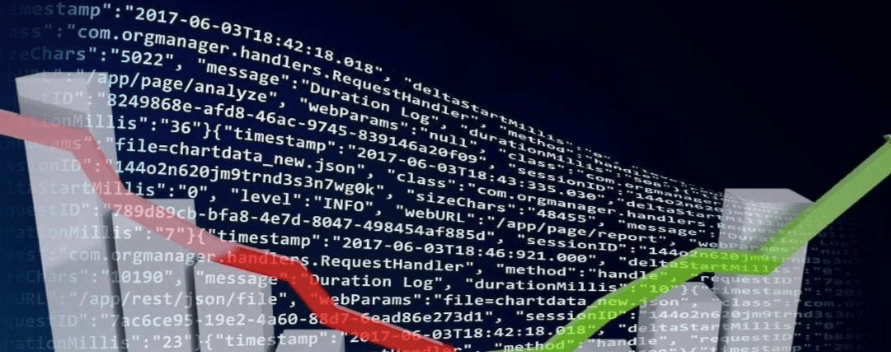
What do you need before backtesting?
The most important thing is to try to find unbiased data to avoid distorting the performance of the model. If biased data is used, it is almost inevitable that the test results will be distorted.
While it is impossible to completely avoid bias, you should try to mitigate its impact to obtain results that are as transparent and reliable as possible. There are several types of bias that can affect your data, which in turn can affect the performance of the model.
Optimization bias
First, optimization bias (also known as curve fitting) describes a trader introducing additional parameters and winning trades until the performance of their strategy meets their expectations. Or - "cover up the system's flaws" and artificially inflate the results. However, doing so only serves to deceive you and lead to unexpectedly poor performance when you go live.
Forward-looking bias
There is also a forward-looking bias, where you accidentally incorporate future dates into the simulation. This error can be caused by improper parameter calculations, technical errors (mainly when writing backtesting scripts from scratch), etc. To avoid this, be sure to carefully check the data and backtesting method before going live. Otherwise, the strategy may perform poorly in actual trading.
Other biases
There are other types of biases. One is survival bias. This bias occurs when backtesting a strategy on a dataset that is not representative of all relevant assets of interest to you. Another is psychological tolerance bias. This bias occurs when you backtest for a long time to improve performance, but you actually plan to trade short-term.
After making sure that the data and backtesting methods are as unbiased as possible, it's time to focus on choosing backtesting software. If you trade through a specific broker, they most likely have built-in backtesting capabilities on their platform. At least the most popular brokers do. In this case, the advantage is that you will be using a tested solution that is easy to use and works. It will also help you solve a key problem that traders often underestimate - including transaction costs in the backtesting model. Even if they are negligible, they will affect the profitability of your strategy when they accumulate over long-term trading.
You can also subscribe to a third-party backtesting platform. However, keep in mind that backtesting is often an ongoing process. You should occasionally backtest your strategies, or if you plan to expand your portfolio, trade alternative assets, etc. Doing so means you must set aside a specific budget to pay for backtesting software regularly.
Those with technical skills can write backtesting scripts from scratch using R, Python, or even Excel. You can also hire a programmer to translate your strategy into code.
After finding the right trading method and perfect backtesting software, it's time to roll up your sleeves and work hard.
Choosing a backtesting strategy
There are no restrictions on the specific strategies you will backtest. Most traders have several trading strategies, depending on market conditions (downtrend/uptrend), asset type, risk/profit potential, etc. Understandably, you should make sure to test all strategies and assess their performance.
Always backtest a strategy before applying it to the real world. For example, if a trading strategy performed well during last year's first-quarter bear market, it may not perform well in this year's bull market. The key here is to contextualize information.
In addition, it is essential to backtest trading models under various market conditions. Although the market will never move in exactly the same way. In most cases, traded assets exhibit patterns similar to those previously seen.
The more scenarios you backtest, the more representative and credible the results will be.
Choosing an asset to backtest
Ideally, backtest your strategy using data from the same instrument you plan to trade live. For example, if you plan to apply your method to trading soybean futures, be sure to download historical data from CME or other service providers such as Dalian Commodity Exchange and run your model on it.
This way, you can ensure that the results only consider factors specific to the asset. For example, factors such as seasonality, volatility, supply and demand, and external risks (i.e., severe weather conditions in the largest soybean producing regions).
Make sure to always backtest your strategy with the exact assets you intend to apply it to. If this is not possible (e.g., historical data is not available), find a reasonably similar asset that can accurately simulate the behavior of the original asset. In this case, you may need to make small adjustments to the backtesting model to ensure the results are feasible.
If you plan to trade a group of stocks, be sure to collect a representative sample. The data should include stocks of companies that went bankrupt during a specific period. Don't exclude these stocks, as this may affect the performance of your strategy. For example, if you pick stocks of all existing companies today, you will get artificially high returns when backtesting the system.
How to backtest trading strategies
Regardless of which platform you use, the principles of backtesting trading strategies are basically the same.
Step #1
In the first step, you must provide the backtesting algorithm with carefully selected historical data. When testing a trading strategy with historical data, you need to specify a specific time period for the training set (e.g., we take US stocks as an example, the price of AAPL stock from 2022 to 2023). Then, you need another set of data for alternative time periods. The reason for testing strategies over different time periods is to verify their reliability and mitigate the effect of "randomness" throughout the process.
Step #2
Next, you must set some parameters, depending on the complexity of your backtesting model. These parameters may include initial capital, risk capital (%), portfolio size, commissions, average bid-ask spread, and most importantly, a benchmark (usually the S&P 500 index).
You should also set specific parameters for the trading strategy. These include stop-loss and trailing stop-loss orders, take-profit levels, when to close positions, preferred position type, etc.
Step #3
Next, you will backtest on the test dataset. All of the above information will be used to simulate trading over a specific period.
After completing the backtest, you should re-run the process on another set of data (at least a few times). This will help ensure the elimination of any potential biases and the effects of "randomness".
Most backtesting software also supports automatic strategy optimization. This feature is very convenient. The computer can figure out which input (or combination of information) your strategy works best with. Ideally, it will also give you some ideas on how to fine-tune the model.
Backtesting methods
The most popular backtesting method aims to measure the so-called "Value-at-Risk". As its name suggests, VaR reveals the maximum loss that may occur during a specific inspection period and dataset, and the probability of its realization.
By understanding the risk value of its portfolio, an investment manager or trader can be better prepared for the worst-case scenario.
We can use several different methods to check value at risk. Some of these methods include Monte Carlo simulation, Variance-Covariance Method, and more.
What all backtesting methods have in common is their conclusion. They tell you where the strategy falls short and where it performs well so you can make the right adjustments and optimizations to ensure the best risk/reward.
How to evaluate the results?
After completing the backtest, it's time to interpret the results and see how your strategy performed during the observation period.
You should know that there is no golden formula or rule that can define whether your trading strategy is good or bad. For all the analysis you do, you need to keep the necessary context in mind. Some of this context includes what other assets are in your portfolio, the market environment, and the unique characteristics of the strategy. For example, some strategies are designed to be more risky. Of course, they will also yield higher profits. Other strategies are more conservative, resulting in lower growth in the value of your portfolio at the end of the backtest.
The best way to evaluate strategy results is to define your risk appetite and profit goals. After running a backtest, check whether the strategy produced results that meet your goals. Also, be sure to add a benchmark (such as the S&P 500/CSI 300 Index, which is the most widely used benchmark). After performing the backtest, you will see how your strategy performs in the market.
Backtesting methods will generate results for different metrics. These metrics include net profit and loss, total portfolio return over a given time period, risk-adjusted return, market risk exposure, volatility, etc.
Finally, the software will quantify the backtesting results for each measure. Depending on the software you use, you can also generate charts and visualize the backtesting results.
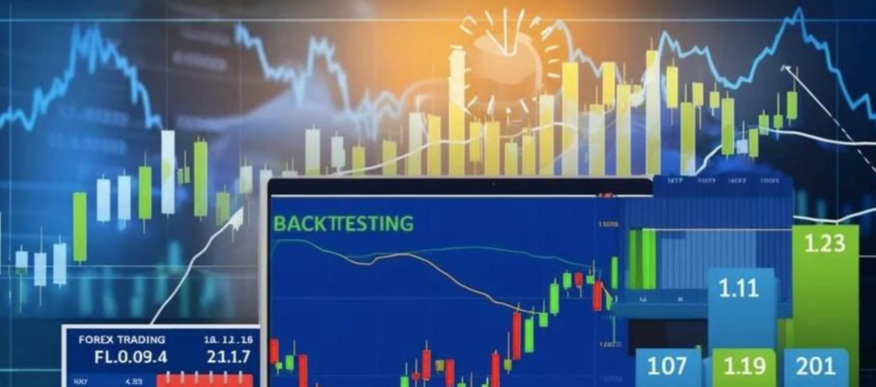
What is the standard of success?
Don't make the mistake of choosing a strategy based solely on returns. While profits are important, they don't provide any useful information when taken out of context. On the contrary, profits may deceive you into choosing high-risk strategies.
To avoid falling into this trap, analyze the returns in addition to analyzing the risk taken. Understandably, the best strategy is to achieve satisfactory returns without significant risk. Or, it has a higher Sharpe ratio.
In addition, be sure to track volatility. If after backtesting, you find that your portfolio has periods of high volatility, you should realize that if this happens in real trading, you may trigger stop-loss or take-profit orders. That's why it's critical to wait and adjust orders based on the volatility of the portfolio.
Another key factor that determines your success or failure is the correlation between components. If the assets are highly correlated, it means your portfolio doesn't have enough resilience or cushion to withstand shocks and industry-specific risks. Alternatively, it is less diversified and under-hedged. This makes it more vulnerable to different risks.
Conclusion
Ten years ago, backtesting was a proprietary right only enjoyed by large institutions such as hedge funds, investment banks, and high-frequency trading firms. Today, thanks to technological advances, even retail traders and small-scale investors can backtest. Today, backtesting is no longer a luxury. It has become a necessity and a real must-have if you want to successfully navigate the financial markets.
In the best-case scenario, trading without proper backtesting is educated guessing. Backtesting a trading strategy is a must for traders. Without accurate initial analysis and risk assessment, you enter the market unprepared and vulnerable to attack, not only from the market but also from other traders.
Remember that most traders you compete with today use backtesting. If you want to avoid losing and gain a competitive advantage, be sure to do your homework. In addition, you also need to constantly learn the top dry goods of professional traders to optimize your trading strategies.
After ten years of coin trading, you may need some investment and trading experience! I have compiled my experience for your reference and learning.
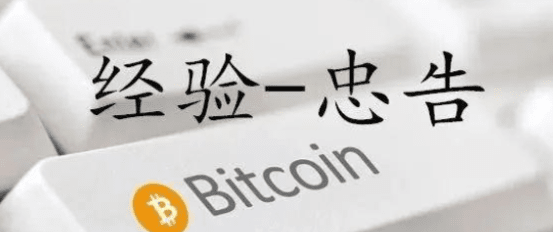
The premise of our investment:
1. Ensure that your own life is guaranteed.
2. Family life is guaranteed.
3. Don't invest with emergency money.
4. Don't invest borrowed money.
5. Don't invest with credit card money.
6. Invest with spare money and keep some cash for emergencies.
Investment methods:
Full-time investment:
1. Plenty of time, proficiency in business.
2. Need more funds.
3. Invest appropriately in high-risk, high-return varieties.
4. Specialize in one investment variety, focus to be professional.
Part-time investment:
1. Less time, general business.
2. The amount of funds can be large or small.
3. Invest in low-risk varieties and invest for the long term.
10 major misconceptions about investing:
1. Full position trading - full position will definitely lose.
2. Frequent trading - lack of technical guidance.
3. Trading against the trend - low probability, high risk.
4. Locking positions - difficult for retail investors to control.
5. Lowering and raising the average holding price - a mistake on top of a mistake.
6. Trying to predict the top and bottom, not setting stop loss - finding reasons for mistakes.
7. Long after going long, and short after going short. Too much pursuit of perfection without a goal.
8. Believing in news and blindly following the trend - lack of understanding of the market.
9. Unable to self-reflect, doubting the market - developing fear of the market.
10. Make a long-term trading plan - the future is uncontrollable.
The concept of successful investment:
1. Follow the trend, the flowing water does not contend.
2. Look at the big picture, start with the small details.
3. Forget the cost, enter and exit calmly.
4. Don't be impatient or irritable, don't worry about profits or losses.
5. Risk first, do what you can.
6. Calmness, wealth accumulation.
Newbie operating principles:
1. If you don't understand the market, you can ask the instructor instead of trading arbitrarily.
2. Never place orders against the market. Don't be greedy for small profits. Don't do counter-trend rallies or adjustments in a long position.
3. Do not do consolidation or volatile market.
4. Do not operate with a full position.
5. Stop loss decisively, without hesitation.
Eight rights and eight wrongs in the investment market:
1. Taking the trend as right and going against the trend as wrong (once a trend is formed, it is difficult to change in the short term).
2. Taking light positions as right and heavy positions as wrong - positions affect attitude, and attitude affects decision-making.
3. Taking contentment as right and greed as wrong - greed is the enemy, contentment is the key to happiness.
4. Taking stop loss to protect profit as right and letting it go as wrong - protecting capital first, making money second.
5. Taking objective operation as right and subjective analysis as wrong, operate objectively and abide by the rules.
6. Taking waiting and patience as right and impatience and impulsiveness as wrong, cultivate patience and act at the right time.
7. Taking profit and adding positions as right and being trapped and adding positions as wrong. Profit is the right direction, and being trapped is the wrong direction.
8. Taking calmness as right and being preoccupied with gains and losses as wrong. The essence of trading is the battle of human nature and mentality.
Advice from the instructor to investors:
1. Avoid investing all your funds.
2. Timid, impulsive, daring to lose but not daring to earn, not suitable for investment. Successful investors can control their emotions and have strict discipline.
3. Don't overtrade.
4. Face the market squarely, don't fantasize.
5. Make appropriate pauses in trading, don't be short-sighted.
6. Never blindly follow the trend.
7. When in doubt, wait and see.
8. Act decisively, never get bogged down or miss the opportunity.
9. Forget about past prices.
10. Patience is also an investment. Know how to wait and know how to give up.
Mature trading judgment:
1. Stable positive returns.
2. The signal has stability and closure.
3. Controllability of risk.
4. A replicable trading model.
The instructor believes that the most important thing is to establish your own trading method and rules:
1. Don't guess whether the market is long or short. After the market gives a direction, there is usually a long way to go, and it will not easily change direction. Don't expect the market to turn around every day, but focus on following the trend.
2. To see the direction and turn of the market, you must use the moving average of large cycles and break through the form, and you must never draw conclusions with the K-line of one or two days.
3. See the direction clearly, control the position, exit in time if you are wrong, and hold on firmly if you are right.
4. Learn to exit profitably.
5. Overcome fear and greed.
Instructor's summary of more than 10 years of coin trading experience:
1. Focus on one variety.
2. The simpler the indicators, the better (moving averages, trend lines). Simplicity is beauty, simplicity is stability.
3. Develop the habit of reviewing the market after closing.
4. Entry and exit indicators should be consistent.
5. Develop the good habit of trading on the right side.
6. Have a calm mind and grasp the overall trend of the market.
7. Don't trade with heavy positions. Even mature traders should trade with light positions.
8. Do medium and long-term trading in a trending market and swing trading in a volatile market.
9. Go long when the price is above the moving average, and go short when the price is below the moving average.
10. Be clear about the relationship between the amount of holdings and the contract price. Increase holdings to go long when the price rises, and increase holdings to go short when the price falls. A decrease in holdings when the price rises indicates a reversal, and a decrease in holdings when the price falls also indicates a reversal.
11. Go long during periods when there are more rising cycles, and go short during periods when there are more falling cycles.
The above is the trading experience that Mu Qing shared with you today. Many times, you lose many opportunities to make money because of your doubts. You don't dare to try boldly, to contact, to understand, how can you know the pros and cons? You only know how to take the next step when you take the first step. A cup of warm tea, a piece of advice, I am both a teacher and a good friend to talk to.
Acquaintance is fate, understanding is destiny. Mu Qing firmly believes that those who are destined will meet each other from thousands of miles away, and those who are not destined will pass by each other. The road to investment is very long, and temporary gains and losses are only the tip of the iceberg along the way. Know that even the wise can make mistakes, and the foolish can gain something from a thousand attempts. No matter what the mood is, time will not stop for you. Pick up the boredom in your heart, stand up again and move forward.